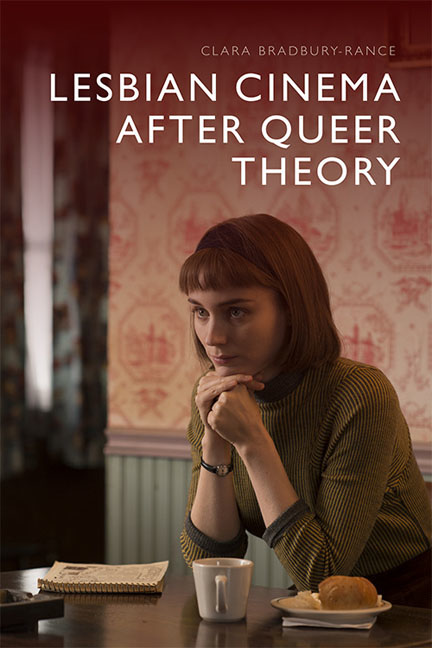Book contents
- Frontmatter
- Contents
- List of Figures
- Acknowledgements
- Preface
- Introduction: Looking after Lesbian Cinema
- 1 The Woman (Doubled): Mulholland Drive and the Figure of the Lesbian
- 2 Merely Queer: Translating Desire in Nathalie … and Chloe
- 3 Anywhere in the World: Circumstance, Space and the Desire for Outness
- 4 In-between Touch: Queer Potential in Water Lilies and She Monkeys
- 5 The Politics of the Image: Sex as Sexuality in Blue Is the Warmest Colour
- 6 Looking at Carol: The Drift of New Queer Pleasures
- Conclusion: The Queerness of Lesbian Cinema
- Notes
- Filmography
- Bibliography
- Index
5 - The Politics of the Image: Sex as Sexuality in Blue Is the Warmest Colour
Published online by Cambridge University Press: 14 December 2019
- Frontmatter
- Contents
- List of Figures
- Acknowledgements
- Preface
- Introduction: Looking after Lesbian Cinema
- 1 The Woman (Doubled): Mulholland Drive and the Figure of the Lesbian
- 2 Merely Queer: Translating Desire in Nathalie … and Chloe
- 3 Anywhere in the World: Circumstance, Space and the Desire for Outness
- 4 In-between Touch: Queer Potential in Water Lilies and She Monkeys
- 5 The Politics of the Image: Sex as Sexuality in Blue Is the Warmest Colour
- 6 Looking at Carol: The Drift of New Queer Pleasures
- Conclusion: The Queerness of Lesbian Cinema
- Notes
- Filmography
- Bibliography
- Index
Summary
Twelve minutes into Blue Is the Warmest Colour (Abdellatif Kechiche, 2013), a teenage girl, Adèle, crosses a busy urban intersection. In close-up, the focus on her face evolves as she catches sight of another young woman who is new to us and to her: a stranger with vibrant blue hair, a self-possessed glance and an arm casually draped across the shoulders of a female companion. We track the approach of this blue-haired stranger until she crosses the path of our protagonist. The camera then swivels along with both figures in a single sweeping take as they contemplate one another, each contorting her body to keep the other in sight (see Figure 5.1). In the aftermath of a wordless, touch-less encounter, fast pans and jump cuts accompany the beeping horns of impatient cars surrounding Adèle in a disorienting haze of traffic, colour and movement. By this moment in a three-hour film, we have been made familiar with three recurring locations: the classroom, the playground and the home. We might call this a lesbian bildungsroman – all of the features are there in place for Adèle to make her way to adulthood through the requisite spaces of development. Lifting us out of such recognisable generic locations, the scene yields an abrupt sense of disjuncture not only for its central character but also for its viewers. This is the moment at which Blue Is the Warmest Colour begins its delivery of a spectacle of overwhelming desire that, instead of providing us with a journey towards clarity of sexual orientation, disorients us in time and space. Here we see, instead, sexuality itself as disorientation. If it is a point of transition in a coming-of-age narrative – the protagonist meets the person with whom she will fall in love – it is not the reassuring transition from innocence to experience that is promised by the teleological semantics of that genre.
Blue Is the Warmest Colour, a film of intense drama and explicit sexual detail about the romance between two young women, won the prestigious Palme d'Or at the Cannes Film Festival. Both actresses, Adèle Exarchopoulos (Adèle) and Léa Seydoux (Emma), shared the prize with Abdellatif Kechiche in an acknowledgement of their crucial contribution to the film's ‘synergy’ (see Pulver, 2013). In the aftermath of its success at Cannes, Blue Is the Warmest Colour received extensive and sustained attention in the press.
- Type
- Chapter
- Information
- Lesbian Cinema after Queer Theory , pp. 97 - 120Publisher: Edinburgh University PressPrint publication year: 2019



